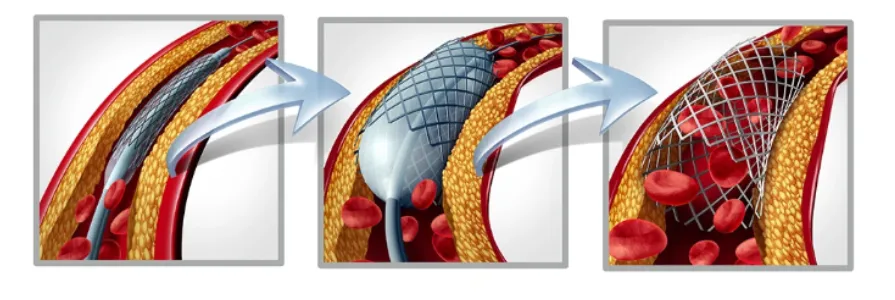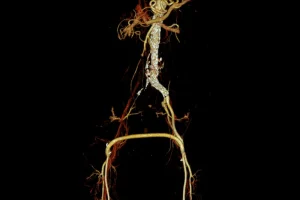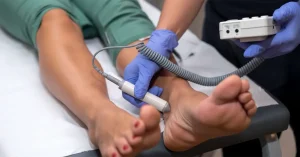Arterial Stenting and Angioplasty
Angioplasty is a medical procedure used to widen arteries that have become blocked or narrowed. Your doctor will use a small balloon to stretch the affected artery, improving blood flow. In most modern cases, a stent, which is a short wire mesh tube, is also inserted into the artery during the procedure. The stent remains in place permanently to help keep the artery open, ensuring blood can flow more freely.
When Is Angioplasty Necessary?
Arteries supply the body’s organs with a constant flow of blood. As people age, arteries can narrow and harden, which may lead to vascular disease. This condition can cause various symptoms, including pain. While medication prescribed by your doctor may often control the discomfort, angioplasty may be recommended if medication is not effective, with the goal of restoring healthy blood flow to the organs.

How Do Angioplasty and Stenting Work?
For angioplasty, you will receive a local anesthetic, and your surgeon will make a small incision in your thigh. Through this incision, a thin, flexible tube called a catheter will be inserted into one of your arteries for the stenting procedure. Using an X-ray machine for guidance, your doctor will carefully move the catheter through the blood vessel to the affected area. Once in position, a thin wire will be passed through the artery to deliver a small balloon to the narrowed section, which will then be inflated to widen the artery.
When the balloon inflates, it presses the fatty deposits against the artery walls, clearing the pathway. Once the artery is widened, the balloon is deflated and removed, leaving the artery open for blood to flow freely. In many cases, a stent will be placed to maintain the artery’s shape and keep it open long-term.
How Long Does the Arterial Stenting Procedure and Recovery Take?
The angioplasty and stenting procedure usually takes about one hour, and most patients can leave the hospital soon afterward. In some cases, however, you may need to stay overnight for observation. During and after the procedure, your vital signs will be closely monitored, and you may be able to enjoy a light meal later that same day.
Because angioplasty is generally straightforward, recovery is often smooth when there are no complications. You will need to avoid lifting heavy objects, engaging in strenuous activity, or driving for at least one week to allow proper healing.
Benefits of Angioplasty
Angioplasty may be recommended if you experience leg pain when walking, known as intermittent claudication, or reduced blood supply to your legs due to diabetes, referred to as leg ischemia. This procedure can also be used to treat peripheral artery disease or to improve blood flow in narrowed or blocked arteries in the kidneys.
By restoring blood flow, angioplasty and stenting can significantly reduce pain caused by restricted circulation, improve kidney function, and lower the risk of stroke by protecting the brain from reduced blood supply.
What Are the Risks of Angioplasty and Stenting?
The success rate for angioplasty and stenting is typically around 90–95%, depending on the extent and complexity of the blockage. Many patients notice significant improvements soon after the procedure, with reduced pain and faster, better healing of wounds in the affected area.
In some cases, restenosis, or re-narrowing of the artery, may occur. Monitoring your symptoms and keeping in regular contact with your doctor is important, as additional treatment may be necessary if problems return.
Minor complications are possible but rare, as the procedure is minimally invasive. These can include bleeding, bruising, or infection at the incision site. Additionally, while your surgeon will take all precautions to avoid allergic reactions, there is a small risk of reacting to the dye used in imaging.
If you have vascular issues and require angioplasty, the doctors at VenArt are here to help. With decades of experience and training in top European and US clinics, they will perform all the necessary tests and guide you toward the best treatment plan for your needs. If you would like a consultation, please contact us.











